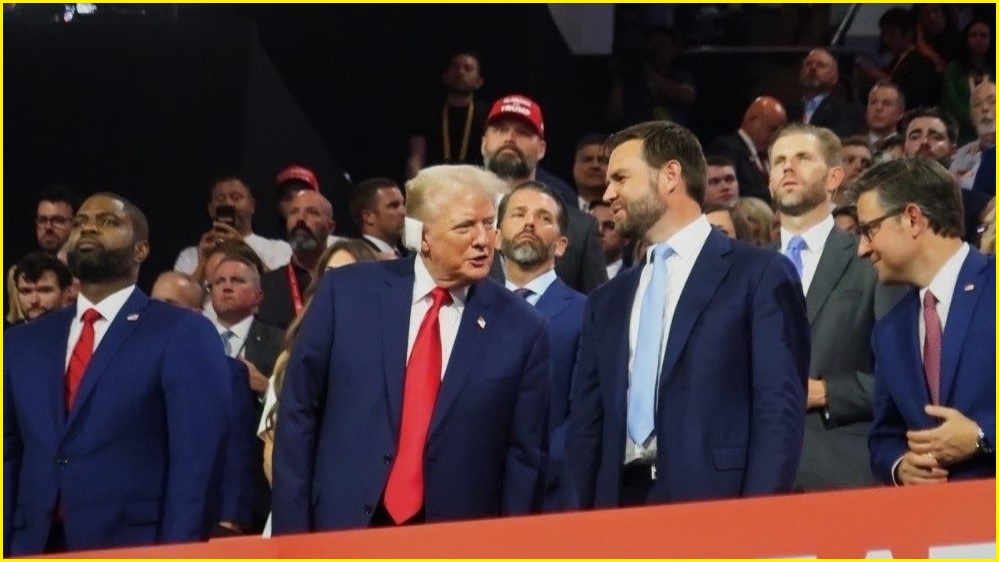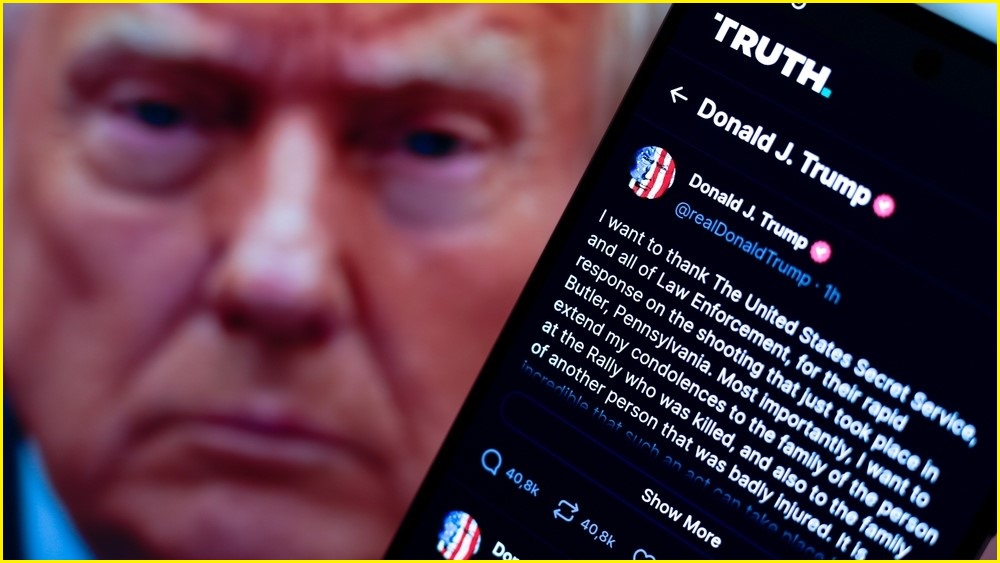Still bleeding from his ear, former US president Donald Trump had barely been whisked off stage in Pennsylvania before conspiracy theories about his attempted assassination, some enhanced by artificial intelligence, overtook social media networks that remained in overdrive across a dizzying news week.
As political parties fought to make sense of the shooting’s implications, the internet was flooded with what conspiracy theory journalist Mike Rothschild called “torrents of insanity”.
There was a doctored photo said to show a Secret Service agent smiling and allegations that Secret Service snipers had been ordered not to neutralise the shooter, who was variously said to have been linked to far-left group Antifa despite classmates saying he “definitely was conservative” in his worldview.
Fact checkers were flat-out discrediting claims that Trump had not actually been shot, that he had actually been shot in the chest, and that the entire shooting was staged.
There were also claims Trump’s political rival, President Joe Biden, had organised or incited the shooting, or that it was a false-flag operation organised by Trump’s team to improve his chances in the country’s November federal election.
Haven't seen Twitter like this since the day Jeffrey Epstein killed himself. Just torrents of insanity, one right after another.
— Mike Rothschild (no relation) (@rothschildmd) July 14, 2024
Echoing the way social media amplified the recent misidentification of Sydney’s Bondi Junction killer, conspiracists jumped upon the misidentification of the Pennsylvania shooter as Italian journalist Marco Violi based on doctored social media posts — an incident Violi blamed on antagonists on social media platform X.
The FBI said it was able to gain access to shooter Thomas Crooks' phone within a day of the incident, but the device reportedly has not provided any information on a motive.
The days after the shooting proved no less fertile for conspiracy theories; the Republican National Convention (at which Trump’s supporters rallied behind him) and news that Biden had tested positive for COVID-19 both fanned the flames of online misinformation.
Aware of his own government’s battle with social media networks about the ongoing disinformation and misinformation campaigns they foster, Australian Prime Minister Anthony Albanese urged Australians “to exercise caution when reading unverified reports of the events, and to seek out credible news sources”.
Although acknowledging that “debate in any democracy needs to be robust [and] even full-throated”, Albanese said, “Social media platforms can be instantaneous distributors of rumours, innuendo, and weaponised mistruth.”
“We all need to be on guard against those seeking to use misinformation to create division … There is nothing to be gained from speculating.”

Donald Trump appeared at the Republican National Convention in the days after the shooting. Photo: GOP Convention / Facebook
It was the best of tweets, it was the worst of tweets
For all social media’s power to unify and support people during times of shared distress, the pervasiveness of accidental misinformation, intentional disinformation, and increasing surveillance have blurred notions of truth and damaged public trust in the information we consume.
Such disinformation, misinformation, and malign influence (DMMI) content has become an inescapable part of public discourse.
Yet while conspiracy theories are hardly a 21st century construct, the attempted assassination of Trump marks the first time such an event has happened in the US in an era where widely accessible generative AI (GenAI) enables photos to be doctored and fake videos to be produced.
Those seeking to discredit the DMMI have their work cut out for them, with new conspiracy theories emerging faster than truth-focused analysts can swat them down.
It’s a dynamic that is particularly amplified in the current global climate of conflict — in which, the US Department of State recently warned, political and military adversary Russia “has operationalised the concept of perpetual adversarial competition in the information environment”.
“This ecosystem creates and spreads false narratives to strategically advance the Kremlin’s policy goals,” the advisory said, presciently noting that “there is no subject off-limits to this firehose of falsehoods”.
“Everything from human rights and environmental policy to assassinations and civilian-killing bombing campaigns are fair targets in Russia’s malign playbook.”
Yet just as it predictably flooded social media networks with DMMI content, the attempted assassination of Trump was also a live test of the social media firms’ ability to police such content.
Or, as in the case of X, their insistence on allowing their sites to function as disinformation free-for-alls.
“We have recently received many requests to suspend or otherwise impact accounts on the left,” Musk wrote as he publicly endorsed Trump amidst swirling misinformation that allegedly drove usage on X to record highs in the days after the shooting (shares in Trump’s Truth Social also surged on the back of the incident).
“However,” Musk wrote, “X is a free speech platform that aspires to give equal voice to all, within the bounds of the law.
“That is what we will do.”










